The Deadly Nature of Childbirth
As a recent medical school graduate in the mid-1990s, Bernhard Fassl, M.D., spent a year and a half working at a hospital in rural Nepal.
One day, he received a call that would his inspire his future as a physician.
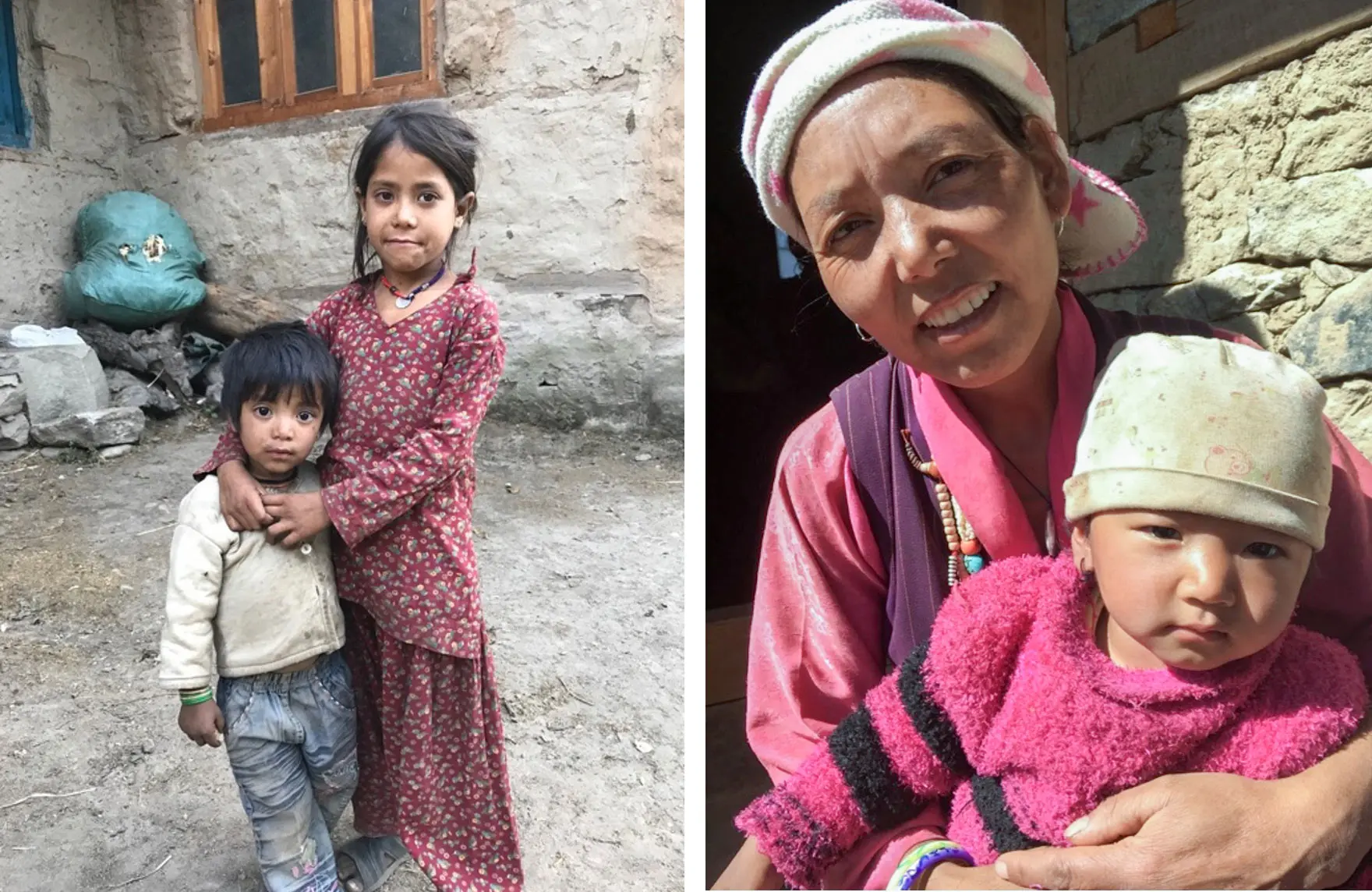
Faces of Nepal: Early career experiences in Nepal inspired Bernhard Fassl, M.D., to work to improve the health outcomes of women and infants during childbirth.
“There's a patient coming in who's carrying his wife after she'd given birth at home. He had carried his wife in one of those huge baskets that people in Nepal use to collect hay for the goats. He put his wife in it and ran down with her from the mountains for 36 hours because she had not been able to stop bleeding after delivery,” Dr. Fassl recounted. “When he arrived, he was covered in blood; it was running down his back. It was all so awful. His wife was more unconscious than conscious and she had a hemoglobin of two. Normal is 15. She had a piece of retained placenta in her uterus, so the uterus couldn't contract. She kept losing blood. She died on arrival at the hospital. The baby didn't survive either.”
That call led to a calling of sorts for Dr. Fassl.
“This was so completely preventable. That really inspired me to say, this needs to be right. People need to be able to give birth in a safe environment,” he said.
That experience led him to focus on pediatrics and maternal health in the context of global health. As former director of the Center for Medical Innovation at the University of Utah and now director of the Center for Global Health Innovation at Northeast Ohio Medical University, he has facilitated similar opportunities and experiences for students of medicine.
A Global Issue
According to a report from UNICEF, 800 women die from pregnancy-related complications every day. The organization estimates that 5 million children died before their fifth birthday in 2021. The World Health Organization (WHO) estimates that there are approximately 6,700 newborn deaths every day across the globe.
WHO has identified improvement of maternal health as one of its key priorities through 2030. Most complications that develop during pregnancy and childbirth are preventable or treatable. According to WHO, nearly 75% of maternal deaths around the world are the result of one or more of the following: severe bleeding; infections; high blood pressure during pregnancy; complications from delivery; and unsafe abortion. For infants, preterm birth; intrapartum-related complications, such as birth asphyxia; infections; and birth defects account for most deaths in the first month of life.
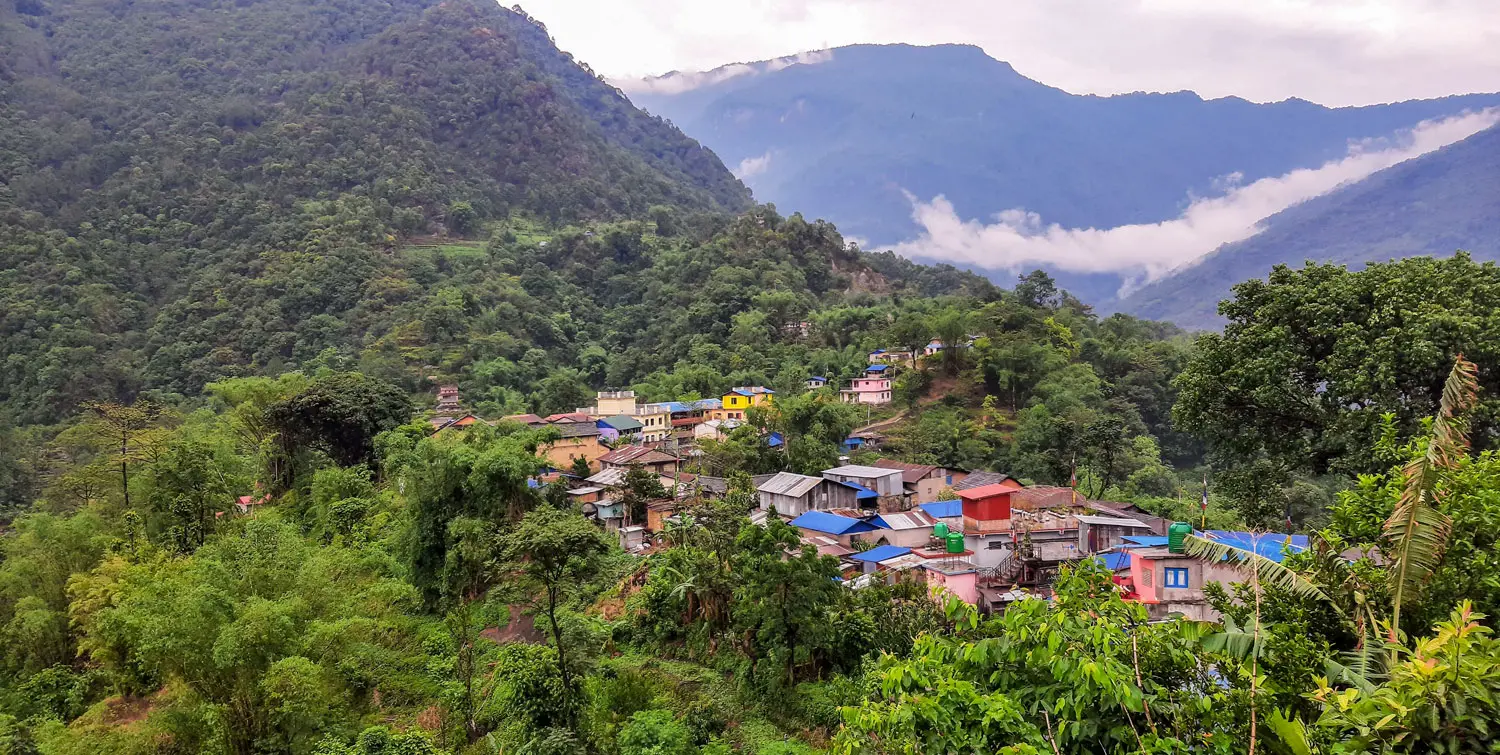
Namche Bazaar, Nepal. Photo by NEOMED medicine student Jackson Casteel.
“Pregnancy and childbirth are life-threatening conditions in many underserved regions of the world,” Dr. Fassl noted.
Better Care, Better Outcomes
While the statistics are still staggering, they represent a significant improvement over conditions in 1990, when there were 65 infant deaths per 1,000 live births and an estimated 532,000 maternal deaths, according to WHO.
Those numbers may be understated, since tracking of live births varied significantly by country. Until the last decade in some developing nations, not every birth was registered until the child reached age one.
“Many babies that died between birth and the first year of life wouldn't even make it into a vital registry,” Dr. Fassl explained.
Still, the improvements over time illustrate the effectiveness of targeted interventions and increasing access to prenatal and neonatal care.
“If services are available to facilitate the process of pregnancy and childbirth, you can really decrease those numbers significantly,” Dr. Fassl said.
He noted that even though the majority pregnancies and deliveries progress normally, a trained birth assistant is still needed to help with the birthing process and monitor for complications.
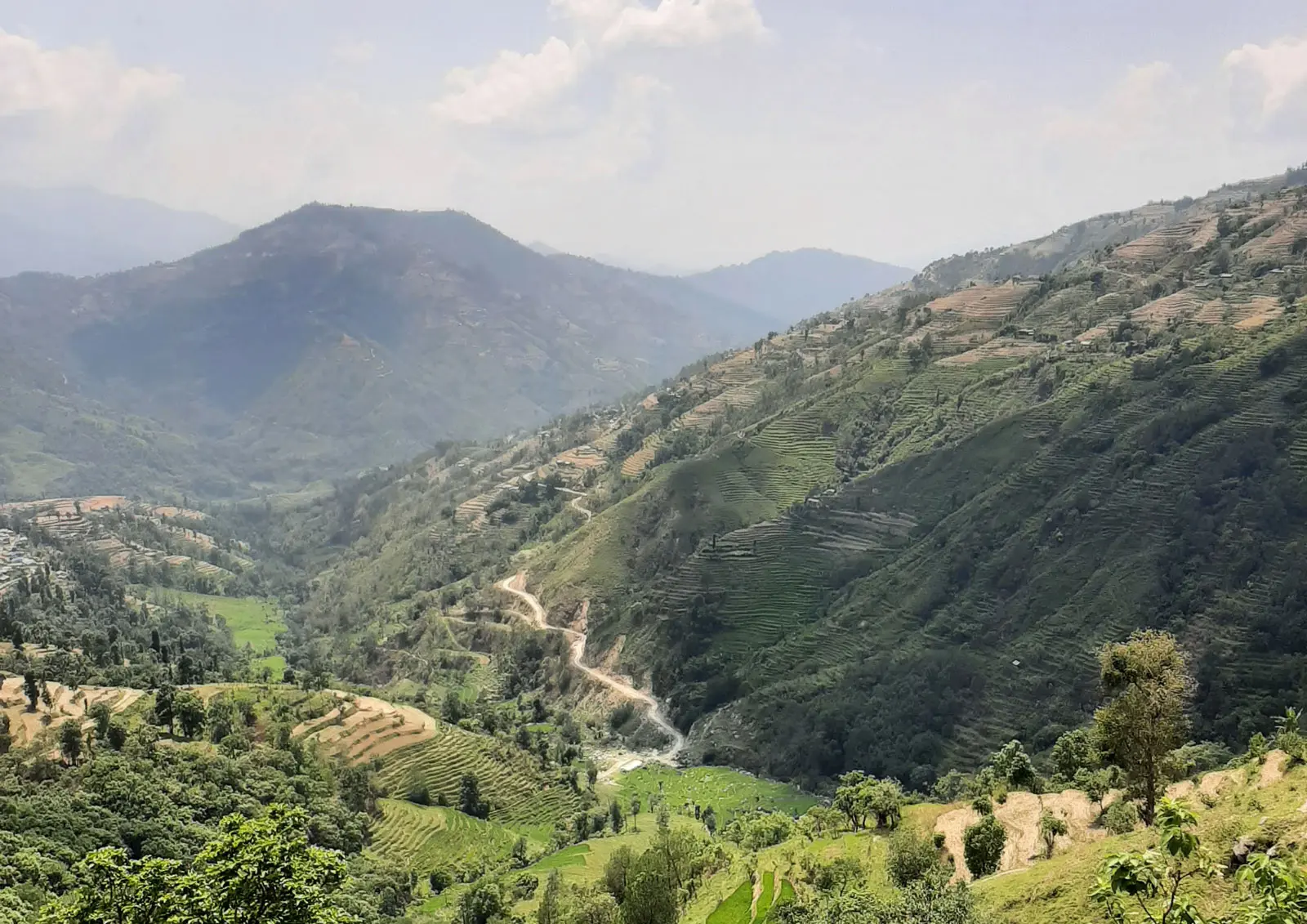
A valley in Nepal. Photo by Jackson Casteel.
“You just make sure that nothing bad happens. Basically the mother and baby are under watch by a skilled health care provider who recognizes emergencies, treats them and you avoid trouble,” he said.
For high risk pregnancies and those who experience complications during childbirth, Dr. Fassl stressed the need for an obstetrician or someone else who is specially trained to be present at the birth.
“People need access to at least basic support services for maternal care. By basic, I really mean basic. You don't need a doctor. You just need a trained health care provider who knows how to monitor and to intervene early enough to prevent the most common causes [of mortality], such as bleeding,” he said. “That's why we check the patient's blood pressure, how the baby's descent is progressing, how the cervix changes over time. We monitor those things, and then we can prevent a bad outcome from happening. So in the first step, you want to make sure that all patients who are pregnant about to give birth have access to these basic services.”
Once the baby is born, WHO recommends that all newborns receive thermal protection, such as skin-to-skin contact; hygienic umbilical cord and skin care; early and exclusive breastfeeding; assessment for signs of serious health problems or need of additional care, such as low birth weight; and preventive treatments, such as immunizations and vitamin supplements.
More than Medical Care
With many mothers in low-resourced areas unable to access basic health services and delivering their babies at home, there are factors and barriers beyond health care to consider.
“The problem is that adverse outcomes are not necessarily just a medical-service problem. Cultural, social and economic factors play a huge role and are likely more influential on the health outcome than medical care alone. In order to provide appropriate medical care, you need an environment that lets you do your job,” Dr. Fassl explained. “That environment includes infrastructure. It's things the staff needs, the skills, the equipment needs, a logistical supply chain. And then you need awareness among the community to access services, right? Poor communities face many barriers and are never able to connect with the health care system. So as an organization trying to improve ‘health’ you've got to think about that and have a clear plan of how you are going to overcome those barriers. And lastly, you need even just a rudimentary data system that lets you track your outcomes.”
Understanding Community
The issues with maternal and infant mortality are not unique to faraway places.
The Centers for Disease Control and Prevention reports that in the United States there were 5.4 infant deaths per 1,000 lives births in 2020. While that’s an improvement over 1990 when there were 9.2 infant deaths per 1,000 live births, the U.S. ranks 34th among developed nations. In Ohio, the picture is even more stark with 6.7 infant deaths per 1,000 live births.
“The U.S. is not a homogeneous nation. If you look at pregnancy, delivery, infant and maternal health outcomes, you will find very different results if you go to the affluent white population that lives in urban America versus Native Americans or impoverished communities of any race and in rural America,” Dr. Fassl said. “So the first step is really to understand your community. Every community is driven by beliefs and values. And unless you understand the values and beliefs that are inherent to a community that experiences problems, you can't even get started.”
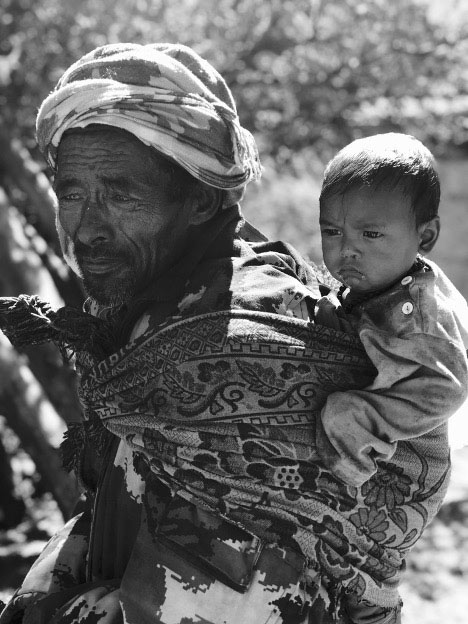
A father and child in Nepal. Photo by Bernhard Fassl, M.D.
Even in the U.S. some mothers prefer to give birth at home.
“They don't want to go to interact with the health care system because they think that people do bad things to the mom and the baby, and you should just give birth at home with the traditional birth attendants. So that's a personal value system that gets interjected here,” he noted.
In communities affected by poverty, political and social instability, and natural disasters, appropriate care-seeking behavior is often not a priority – especially if you need to make a choice between seeking care and missing out on the day’s wages.
“If you're just trying to survive yourself, trying to get by on a day-to-day basis, you're not going to go and get a prenatal ultrasound,” he said. “So environmental, social and economic factors are a huge and often unrecognized component.”
And then there are cultural factors – perceptions and beliefs around health, pregnancy and health care; decision-making power within a family; and social norms and practices inherent to a culture or ethnicity.
“America is comprised of so many ethnicities who come with their own cultural belief systems. When you talk to a person from Nepal about the need for prenatal care, it is different from how you talk to someone from another culture. You’ve got to understand how to send the message to them. If you tell the woman ‘you're pregnant and we need to do an ultrasound every trimester and you need to come here every month because we need to measure your belly and your glucose and so on,’ she might only be able come if her husband was also in the room and agreed to it,” he noted. “Respecting cultural norms is the key to success.”
Understanding the “System”
An area or country that is performing suboptimally on health outcomes must be examined from a systems perspective. Health systems are not always designed to ensure the best outcomes for maternal and infant health.
“Every system delivers the very outcome that it was designed for,” Dr. Fassl contends. “So if we see high rates of maternal and child mortality, it is because the system is designed to deliver that result. But before you can successfully change the system, you've got to understand the current system, understand the barriers, the challenges, contributing factors that are deeply rooted in culture, society, poverty, medical care, etc. If we don’t gain an understanding of the complete picture, we will not be able to devise a solution that is culturally appropriate, that fits the environment. Without a basic understanding of systems theory, you really can't make meaningful changes.”
Bringing It All Together
“I think we in medicine are very good in dividing up our health care system, our education system and our patients into compartments,” Dr. Fassl noted. “So we have the obstetricians and we have the pediatricians. And we treat them [the pregnant woman and fetus] as if they were two different organisms. But the reason why maternal and child health exists is because Mom and baby are a unit. If Mom doesn't do well, the baby does poorly. If the baby does poorly, Mom does poorly. So they are interdependent, and that's a huge risk for both.”
Similarly, addressing medical problems with medical solutions may not be the best approach – especially when the root cause of a medical problem is related to socio-economic or cultural factors.
But it’s difficult to see at first. “You don't see the forest if your view is blocked by all these trees and we in the U.S. are in a middle of the forest. We don't always see the big picture,” Dr. Fassl said. “With global health you remove yourself from the U.S., and you get put in a completely different environment where you're not as enmeshed. So you start to see and understand things that not only apply to a setting in Nepal or India or Africa, but when you come back home.”
Global health experiences allow students of medicine and physicians to see the system level more clearly and expand the observer’s horizon.
Programs like the Center for Global Health Innovation at NEOMED provide immersive experiences in under-resourced areas and opens the doors to understanding the true root causes of adverse medical outcomes. Reciprocal partnerships with academic, governmental and nongovernmental organizations in India and Nepal, funded by the Kiran and Pallavi Patel Foundation, the Dinesh and Kalpana Patel Foundation, the Sorenson Foundation and the Crocker Catalyst Foundation, help students gain systems knowledge while working on projects related to prenatal care, low birth weight infants (see sidebar), overcoming geographic challenges in the Himalayas, malnutrition and anemia in India, and other topics.
Second-year College of Medicine students Lauren Genco and Clare Rigney spent three weeks in 2022 at a small town in Gujarat, India, as founding members of NEOMED’s Global Health Interest Group and part of NEOMED’s Global Health Innovation program. The pair worked on a project evaluating adherence to India’s LaQysha guidelines for newborn and maternal care and care for infants with low birth weight, defined as less than 2,500 grams (about 5 pounds). The LaQysha guidelines are based off guidelines from the World Health Organization.
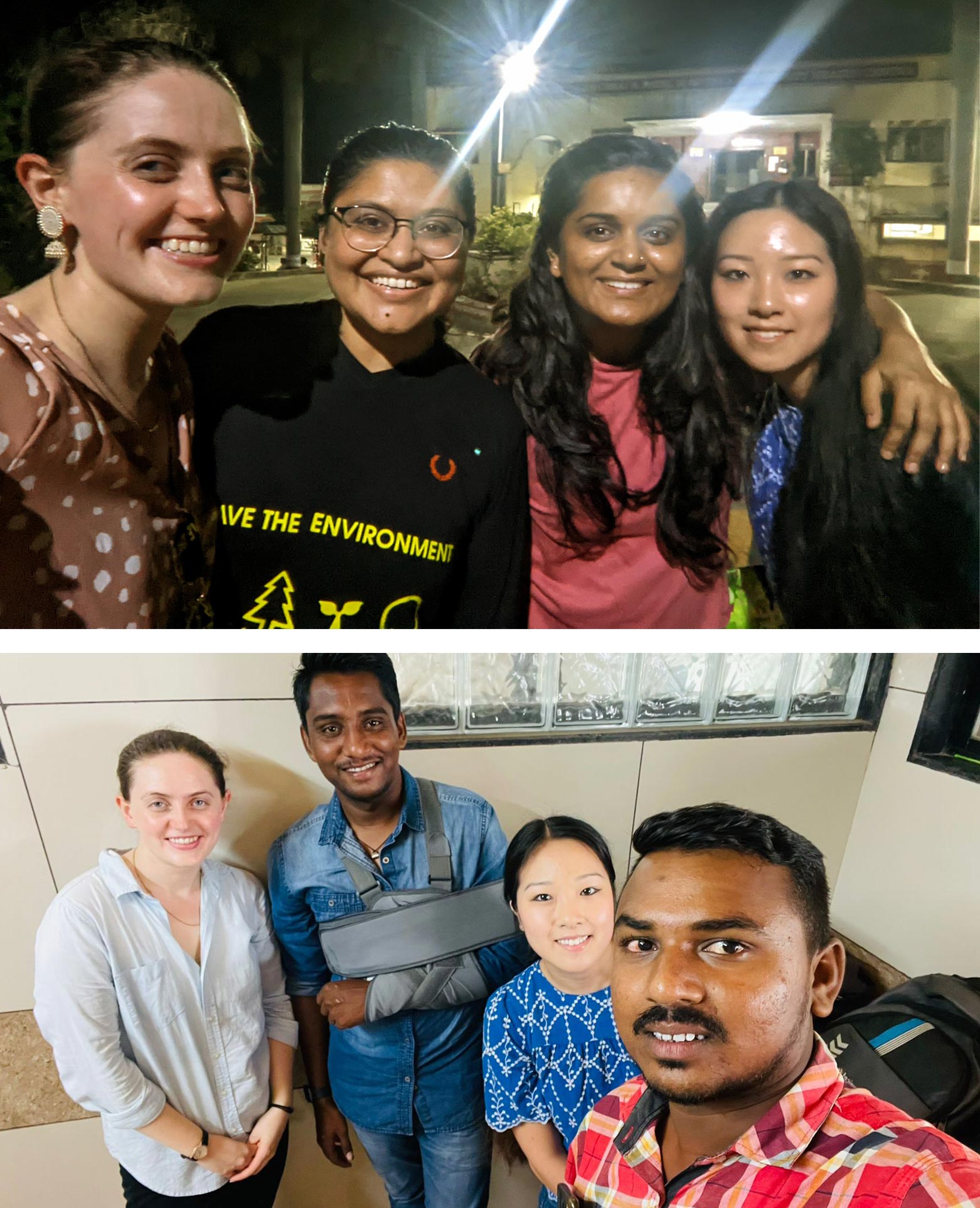
Top: Medicine students Clare Rigney (left) and Lauren Genco (right) with OB/GYN residents Nyati and Urmi. Bottom: Rigney (left) and Genco (second from right) with social workers Samyak and Jaydip.
Their quality-improvement study examined de-identified hospital data going back to 2014. They evaluated presence of skilled health providers at delivery and identified trends in anemia and antenatal care visits by villages the hospital serves.
“We were seeing if certain vitals were taken and things like that,” Genco said. “Who was attending the delivery? Was there resuscitation equipment available? Was it checked? We were evaluating the progression of and compliance with those optimization protocols over the years.”
Those protocols help create a positive postnatal experience, which the WHO says is vital to the short- and long-term health and well-being of mothers and their children.
Both Genco and Rigney have an interest in women’s health issues and participated in the global health experience to increase their knowledge in the field.
NEOMED’s Global Health Innovation program provides students with immersive experiences, working with local partners, like Shakti Krupa Charitable Trust and Kiran Patel Medical College and Research Institute in India, to focus on community and patient needs. Such partnerships are largely funded by funded by the Kiran and Pallavi Patel Foundation, the Dinesh and Kalpana Patel Foundation, the Sorenson Foundation and the Crocker Catalyst Foundation.
During their stay, Genco and Rigney were able to shadow social workers engaged in postnatal follow-up visits.
“On a given day, we would go visit the low-birth-weight babies,” Rigney said. “They [the social workers] would measure the mass of the baby and ask the mom questions like, How has the baby been feeding? Are you getting the baby to appointments? Do you need help getting the baby to appointments? Do you need help getting baby food? Because the hospital has a lot of free resources.” With their questions, the social workers assess the mother’s need for those resources.
"Maternal mortality was really high as well as infant mortality,” Genco noted, adding that the Indian government had developed a public health program to combat the issues.
An important part of that public health program is the ASHA workers who Genco and Rigney encountered during their shadowing experiences. ASHA – Accredited Social Health Activists – help connect marginalized communities to the health care system.
“Each village has an ASHA worker — a woman who would help take care of the pregnant moms and help run the antenatal care clinics,” Rigney said. “It's like being paid to be a grandma. Grandma will come over and be like, oh, how's your kid doing? Did you take your meds?”
While the immersive experience in a low-resourced area presented many positive learning opportunities, there were some uncomfortable moments.
“There's obviously an influence of the culture on health care and so [program director Bernhard Fassl, M.D.] told us to be prepared and be open. That some things were different. Like serious sexism, things like that,” Genco shared. “So that was something we knew we were going to see. And when we were actually seeing it, I don't want to say it was surprising, but it was definitely something to process.”
One experience in particular stuck with her.
“We saw one extremely low-birth-weight infant, a girl, in the fieldwork,” Genco recounted. “She was going to die in a few days if she didn't get to the hospital. The family didn’t want to bring her, and then it came out that it was the father's father who didn't want to bring her to the hospital. So the social workers and the ASHA worker spent two hours there that night convincing them to come. They finally did.”
“Just seeing things like this, with the high mortality rates, there’s a mentality that is very different from the mentality in the U.S. It's hard and sad, but you can't do anything. It's not your place to do anything, but it's a weird thing to experience.”


